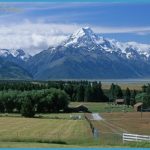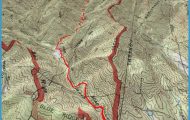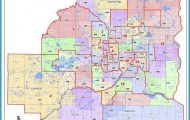GOOSEBERRY RIVER
Lake Superior Lava Flows
Gooseberry Falls State Park is one of the best places on the North Shore to see some of the lava flows that cover this region. About one billion years ago, lava ran out of fissures in the ground. For hundreds of thousands of years the flows poured forth covering an area about 150 miles wide, from the North Shore to Michigan’s Upper Peninsula, and south along the St. Croix River valley. Flows varied from one to more than 60 feet thick and eventually totaled more than 23,000 feet. In Gooseberry Falls, no less than 30 separate lava flows have been identified. When you stop to view the Lower Falls, see if you can pick out the three different flows visible there.
As a result of varying rates of cooling within a lava flow the upper portion is softer than the lower. At the top of each fall is the resistant bottom part of a lava flow. As falling water wears away the softer top layer of the underlying lava flow, it undercuts the overlaying resistant layer which eventually collapses. The waterfall slowly works its way upstream as this process is repeated over and over again. Imagine, one day the Lower Falls will be above the bridge.
Gooseberry River History
While Gooseberry Falls is today a focal point for tourists, in the past it attracted fishermen and loggers. In the 1870s, commercial fishermen began operating near the mouth of Gooseberry River. By the 1890s, loggers were transporting timber from the surrounding countryside to the mouth of the river. According to Frank King, in Country Logging Railroads, the Estate of Thomas Nestor, owners of a large Michigan lumber company, purchased the timber in the Gooseberry River area in 1900 which they logged until 1909.
Railroads helped loggers move the timber to the mouth of the river. There, from a ledge along the west bank, the logs were dumped into the river 70 feet below and formed into giant booms. The largest boom ever towed across Lake Superior was owned by the Nestor Company. The boom contained 6 million board feet of timber and was towed 230 miles to a Nestor Company sawmill in Baraga, Michigan. The next winter, there were 800 men working in five camps on the North Shore cutting timber so that by the spring of 1902, 50 million board feet of timber lay at the mouth of Gooseberry River waiting to be towed to sawmills. As a result of heavy logging and large fires in 1903 and 1910, there were no pines left 30 years after logging began. Today the forests of the park consist mainly of white birches, balsam firs, white cedars, and aspens.

















